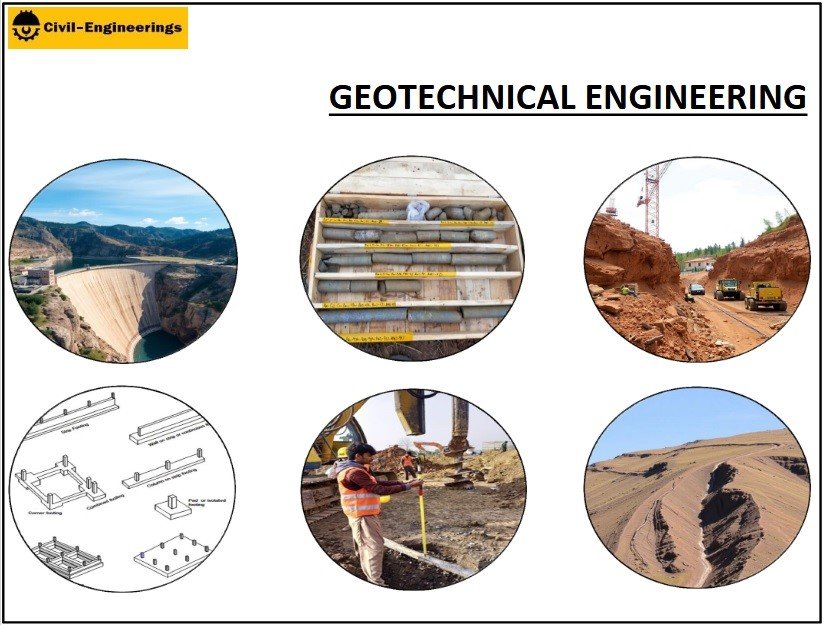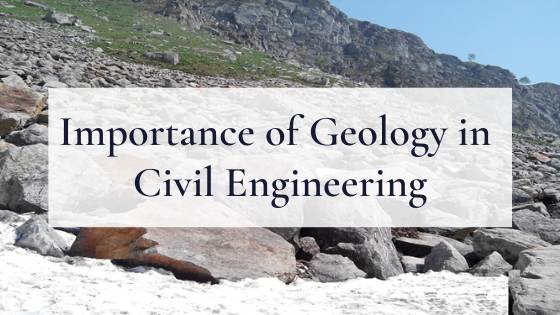The Geotechnical Engineering For Construction Projects PDFs
The Geotechnical Engineering For Construction Projects PDFs
Blog Article
See This Report about Geotechnical Engineering For Construction Projects
Table of ContentsRumored Buzz on Geotechnical Engineering For Construction ProjectsThe Definitive Guide for Geotechnical Engineering For Construction ProjectsAbout Geotechnical Engineering For Construction ProjectsThe 10-Minute Rule for Geotechnical Engineering For Construction ProjectsGeotechnical Engineering For Construction Projects Fundamentals ExplainedLittle Known Facts About Geotechnical Engineering For Construction Projects.
These functions have to be analyzed by geotechnical designers to forecast their motions under numerous circumstances., making this evaluation needed.A geotechnical engineer will certainly examine soil to establish the bearing capacity of the planet and suggest proper foundation types, such as superficial foundations, deep structures like piles, or specialized remedies like drifting foundations for soft dirts. Comprehending the functions and actions of dirt and rock, in addition to exactly how they connect with buildings that have actually been put up on or within them, is one of the main descriptions for why geotechnical design is necessary.
In addition to structural preparation and construction, geotechnical engineering is also essential to the reconstruction and upkeep of pre-existing structures. Age-related deterioration or added problems can influence a structure's stability and efficiency. Environmental defense is achieved via geotechnical engineering. Competence in air, water, and dirt quality upkeep is used by geotechnical engineers to decrease the adverse impacts of jobs.
Infrastructure growth, offshore engineering, tunnel building, and deep foundations. Risk-based layout and multidisciplinary groups. These parts will keep the area progressing and guarantee its continued relevance in the years to find. To sum up, geotechnical design is a crucial self-control that maintains the strength and integrity of civil infrastructure. Geotechnical engineers add to making structure jobs reliable around the world by recognizing the behavior of earth materials and applying ideal preparation approaches.
Some Known Questions About Geotechnical Engineering For Construction Projects.
The foundational stability of any task is necessary. Geotechnical engineering plays a critical duty in making sure that structures are built on strong ground, actually and figuratively. By analyzing soil, rock, and subsurface conditions, geotechnical engineers give crucial insights that assist in the layout, construction, and maintenance of buildings and framework.

The smart Trick of Geotechnical Engineering For Construction Projects That Nobody is Discussing
Laboratory testing: Determining the properties of dirt and rock. Several prominent building and construction projects have successfully utilized geotechnical engineering to ensure their security and safety.

As a leader in geotechnical engineering, BECC Inc. is committed to supplying cutting-edge and efficient remedies that satisfy the greatest requirements of top quality and security. For more information on how BECC Inc. can sustain your following construction task, contact us today and allow us aid you build on solid ground.
William Rankine, an engineer and physicist, developed an alternate to Coulomb's earth pressure theory. Albert Atterberg developed the clay uniformity indices that are still used today for soil category. In 1885, Osborne Reynolds acknowledged that shearing causes volumetric extension of dense materials and tightening of loosened granular products. Modern geotechnical design is claimed to have started in 1925 with the publication of Erdbaumechanik by Karl von Terzaghi, a mechanical designer and geologist.
Not known Facts About Geotechnical Engineering For Construction Projects
Terzaghi likewise created the framework for theories of birthing More Bonuses capacity of structures, and the click here for more info theory for prediction of the rate of settlement of clay layers because of combination. Later on, Maurice Biot completely developed the three-dimensional dirt consolidation theory, extending the one-dimensional version previously created by Terzaghi to a lot more basic hypotheses and introducing the set of fundamental formulas of Poroelasticity.
Geotechnical designers investigate and identify the buildings of subsurface problems and products.
Not known Facts About Geotechnical Engineering For Construction Projects
Still, they are occasionally used to enable a rock hound or designer to be decreased into the borehole for direct aesthetic and hand-operated exam of the dirt and rock stratigraphy. Numerous dirt samplers exist to fulfill the demands of different design jobs. The conventional infiltration examination, which utilizes a thick-walled split spoon sampler, is one of the most typical means to collect disturbed samples.

If the user interface in between the mass and the base of an incline has an intricate geometry, slope stability analysis is tough and mathematical remedy techniques are needed. Typically, the user interface's specific geometry is unidentified, and a streamlined interface geometry is thought. Finite inclines need three-dimensional versions to be assessed, so most slopes are assessed assuming that they are definitely large and can be stood for by two-dimensional versions.
Geotechnical Engineering For Construction Projects Things To Know Before You Buy
Producing the layout based on a functioning theory of behavior prepared for under the most likely problems. Choice of amounts to be observed as building and check here construction earnings and computing their expected values based on the working hypothesis under the most negative conditions.
Measurement of quantities and examination of actual problems. Layout alteration per real conditions The empirical approach is appropriate for building that has actually already started when an unexpected development happens or when a failure or crash looms or has currently taken place. It is improper for projects whose design can not be changed during building.
Report this page